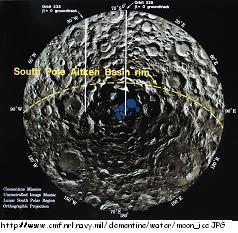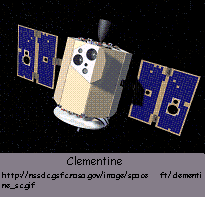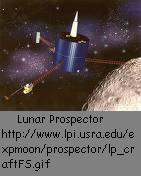
|
Landing Site
AIME
will land on Malapert Mountain because it is 122 kilometers from the South
Pole.  From its height, the rover will have a good view of the lunar South Pole
region. Its summit has a fairly large area of somewhat level terrain
that could provide a decent landing site. Lunar researchers believe
there is a 6° down slope to the west-north west that would give easy
access to and from surrounding points at lower elevations.[3]
From its height, the rover will have a good view of the lunar South Pole
region. Its summit has a fairly large area of somewhat level terrain
that could provide a decent landing site. Lunar researchers believe
there is a 6° down slope to the west-north west that would give easy
access to and from surrounding points at lower elevations.[3]
 The primary reason for landing here is because scientists believe the South
and North Poles are two possible sites with water ice. On the floor
of the huge 12 km deep South Pole-Aitken basin near Malapert Mountain,
there are many small, deep craters that are never exposed to sunlight.
The temperature in these permanently shadowed regions never exceeds -280°F,
leading to the possibility of water ice left from comet impacts.
In 1994, the Clementine’s Bistatic Radar experiment beamed radio waves
on the moon. The radio echo from the shadowed regions of the South
Pole showed reflection patterns suggestive of water ice. Then in
July 1999, the Lunar Prospector crashed into
The primary reason for landing here is because scientists believe the South
and North Poles are two possible sites with water ice. On the floor
of the huge 12 km deep South Pole-Aitken basin near Malapert Mountain,
there are many small, deep craters that are never exposed to sunlight.
The temperature in these permanently shadowed regions never exceeds -280°F,
leading to the possibility of water ice left from comet impacts.
In 1994, the Clementine’s Bistatic Radar experiment beamed radio waves
on the moon. The radio echo from the shadowed regions of the South
Pole showed reflection patterns suggestive of water ice. Then in
July 1999, the Lunar Prospector crashed into  the
nearby Shoemaker crater. Before it crashed, it measured the amount
of hydrogen on the surface of the moon using a neutron spectrometer.
A significant amount of hydrogen is indirect evidence of the presence of
water ice. The data from the Lunar Prospector showed a 3% signature
over the South Pole which is a strong indication of water ice. Here,
AIME will search for water ice, remnants of the Lunar Prospector in the
Shoemaker Crater, and mooncast images of them back to earth.[18,22] the
nearby Shoemaker crater. Before it crashed, it measured the amount
of hydrogen on the surface of the moon using a neutron spectrometer.
A significant amount of hydrogen is indirect evidence of the presence of
water ice. The data from the Lunar Prospector showed a 3% signature
over the South Pole which is a strong indication of water ice. Here,
AIME will search for water ice, remnants of the Lunar Prospector in the
Shoemaker Crater, and mooncast images of them back to earth.[18,22]
Another
reason for landing on Malapert Mountain is because the sun is always above
the horizon daily except for 35 to 40 days a year. Due to its proximity
to the South Pole and its elevation (5,000m), Malapert Mountain gets constant
sunlight 89% of the time and for 5 or 6 months it is in continuous full
sunlight 24 hours a day, providing nonstop energy.[3]
This also leads to less extreme fluctuations in temperature due to the
absence of cold nights, decreasing the chances of AIME’s circuits freezing.[2]
The
third reason for landing here is because it is in constant view of Earth.
This enables continuous direct line of sight communication relay, allowing
the rover to send near-real time mooncasts back to earth.[3]
AIME
will be landing at noon in the beginning of summer when the sun is the
highest and the mountain’s surface is insolated in sunlight 100% of the
time, providing 24 hours of power for 5 to 6 months. This is more
than enough solar energy to enable AIME to roam over 5000m as it searches
for water ice. |